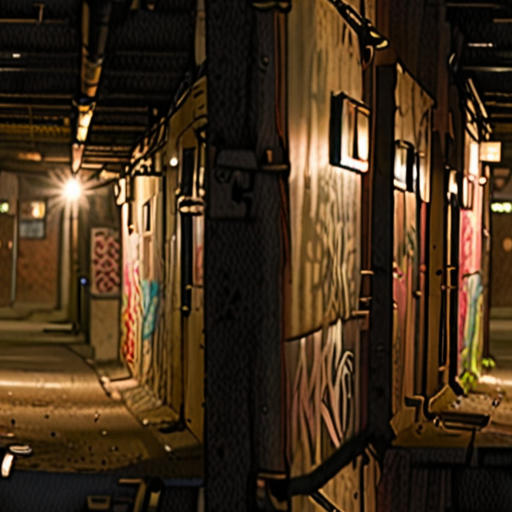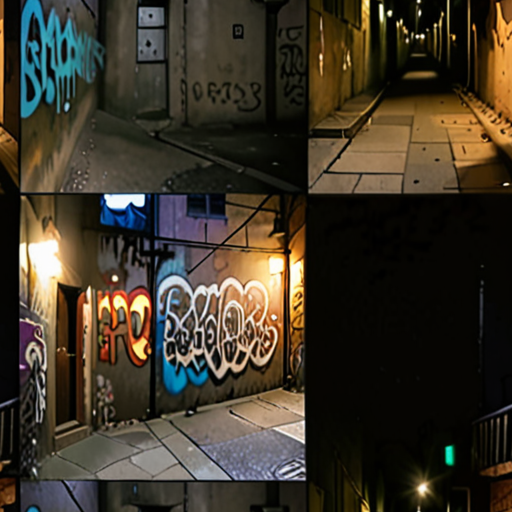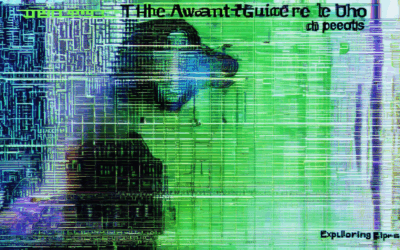For those who crave something beyond the mainstream, alternative rap music offers a rich tapestry of sounds, styles, and emotions that cater to the underground scene’s most devoted followers. This genre has been steadily gaining momentum, thanks in part to its unique blend of lyrical depth, sonic experimentation, and cultural relevance. As we delve into the world of alternative rap, we’ll explore what sets it apart from traditional hip-hop, its evolution over time, and the key figures who have contributed to its growth.

Understanding Alternative Rap
As a hip-hop enthusiast, I’m often asked what alternative rap is all about.
- For me, alternative rap is all about pushing boundaries and defying conventions.
- It’s a genre that refuses to conform to traditional stereotypes of rap, instead embracing a diverse range of styles and influences.
- From funk and pop-rock to jazz, soul, reggae, and even folk, alternative rap draws inspiration from a wide array of musical traditions.
The Evolution of Alternative Rap
Over the years, alternative rap has evolved significantly, incorporating new sounds and styles into its repertoire.
- In the early days, alternative rap was characterized by its experimental approach to production and lyrics.
- Artists like MF DOOM and J Dilla pioneered this sound, blending hip-hop with elements of jazz, soul, and psychedelia.
- Today, alternative rap continues to innovate, incorporating electronic and rock influences into its music.
Key Characteristics of Alternative Rap
So, what sets alternative rap apart from mainstream hip-hop?
- Experimentation and innovation are key characteristics of alternative rap.
- Artists often push the boundaries of lyrical content, exploring themes of social justice, personal struggle, and introspection.
- Production-wise, alternative rap frequently incorporates live instrumentation, samples, and electronic beats.
Notable Artists in the Alternative Rap Scene
Some notable artists who have made significant contributions to the alternative rap scene include:
- MF DOOM – A pioneer of underground hip-hop, known for his intricate lyricism and eclectic production style.
- J Dilla – A legendary producer who blended hip-hop with jazz, soul, and electronic music.
- Kendrick Lamar – While not traditionally associated with alternative rap, Kendrick’s innovative storytelling and fusion of hip-hop with jazz and funk have earned him a place in this category.
Conclusion
Alternative rap is a dynamic and ever-evolving genre that continues to challenge and inspire listeners around the world.
By embracing experimentation, innovation, and diversity, alternative rap remains a vital force in the hip-hop landscape.
What is Rap Mixed with Rock Called?
Rap rock is a music genre that emerged in the early to mid-1980s, when hip-hop DJs started incorporating rock records into their routines and rappers began experimenting with original and sampled rock instrumentation in hip-hop music.
- Rap rock is characterized as rock music with rapped lyrics, distinguishing it from traditional rock genres where vocals are typically sung.
- This fusion of styles has led to the creation of various sub-genres, including alternative metal, nu metal, and rapcore.
Sub-Genres of Rap Rock:
- Alternative Metal: A blend of heavy metal and rap, often featuring aggressive guitar riffs and introspective lyrics.
- Nu Metal: Characterized by its downtuned guitars, rap-influenced vocals, and often, a mix of clean and harsh vocals.
- Rapcore: A fusion of hip-hop and hardcore punk, emphasizing energetic beats and socially conscious lyrics.
Notable Artists and Bands:
- Limp Bizkit
- Korn
- Linkin Park
- Slipknot
Evolution and Influence:
Rap rock has had a significant impact on the music landscape, influencing subsequent genres and inspiring new artists to experiment with the fusion of hip-hop and rock.
The genre continues to evolve, with contemporary artists pushing the boundaries of what rap rock can sound like, incorporating diverse styles and themes into their music.

What is Alternative Music Called Now?
As the music landscape continues to evolve, the term “alternative” has undergone significant changes in recent years.
- In the early 2000s, indie rock emerged as a dominant force in the US, often used interchangeably with alternative rock.
- However, indie rock was initially considered a British-based term, whereas alternative rock had a broader appeal.
The rise of indie rock led to a shift in the music industry, with many artists embracing a more DIY ethos and experimenting with new sounds.
Evolution of Alternative Music
Over time, alternative music has branched out into various sub-genres, including:
- Indie Rock : Characterized by its lo-fi production, introspective lyrics, and eclectic soundscapes.
- Emo : A fusion of hardcore punk and indie rock, marked by emotional intensity and personal storytelling.
- Chillwave : A laid-back, synth-heavy genre that emerged in the late 2000s, often associated with nostalgia and retrofuturism.
- Hyperpop : A genre-bending style that combines elements of pop, electronic, and hip-hop, characterized by its experimental approach and catchy hooks.
These sub-genres have contributed to the diversification of alternative music, making it more inclusive and exciting for listeners.
Competitors and Similar Genres
Other notable genres and platforms that cater to fans of alternative music include:
- Pitchfork : A leading online music publication that covers indie, rock, and electronic music.
- NME : A UK-based music magazine that focuses on indie, rock, and pop music.
- KEXP : A Seattle-based radio station that showcases a diverse range of indie, rock, and electronic music.
While these platforms offer valuable perspectives and discoveries, our primary focus remains on the ever-evolving landscape of alternative music.
Conclusion
As we navigate the complexities of alternative music, it’s essential to acknowledge the genre’s dynamic nature and the numerous sub-genres that have emerged over the years.

Who Created Alternative Hip Hop?
As a pioneer in the underground hip hop movement, I’m excited to share the origins of alternative hip hop.
- The Birth of Alternative Hip Hop
- De La Soul and A Tribe Called Quest
- Other Pioneers
- Abstract Hip Hop’s Role in the Movement
- Avant-Garde Production Techniques
- Spoken Word and Jazz Influences
- Competitors and Collaborations
- Notable Competitors
Alternative hip hop emerged in the late 1980s, primarily driven by artists who sought to push the boundaries of traditional hip hop music.
These influential groups played a significant role in shaping the sound of alternative hip hop, incorporating playful yet thought-provoking lyrics and diverse musical influences.
Other notable artists, such as The Pharcyde, The Roots, and DJ Shadow, further expanded the scope of alternative hip hop, experimenting with avant-garde production techniques and incorporating elements of jazz, funk, and electronic music.
As a platform dedicated to exploring the world of hip hop music, art, and culture, Abstract Hip Hop has been instrumental in promoting and celebrating the diversity of alternative hip hop.
We’ve featured numerous artists who have pushed the boundaries of hip hop production, incorporating unconventional sounds and styles into their work.
Our platform has also highlighted the importance of spoken word and jazz influences in alternative hip hop, showcasing artists who blend these genres with hip hop to create something truly unique.
While there are several platforms that cover alternative hip hop, we believe our commitment to showcasing emerging talent and innovative production techniques sets us apart.
Other notable platforms, such as Pitchfork and Stereogum, offer valuable coverage of alternative hip hop, but our focus on avant-garde production techniques and spoken word/jazz influences makes us a go-to destination for fans of the genre.
Is Tyler the Creator Alternative Hip Hop?
Tyler, the Creator’s music has been described as alternative hip hop, hip hop, neo soul, West Coast hip hop, jazz rap, and hardcore hip hop, while his early music has been described as horrorcore.
- The term “alternative hip hop” refers to a subgenre of hip hop music that deviates from traditional hip hop styles, often incorporating elements of rock, electronic, and experimental music.
- Abstract Hip Hop, a cultural platform dedicated to exploring the world of hip hop music, art, and culture, emphasizes avant-garde production techniques, spoken word, jazz, funk, and electronic influences, offering readers a unique insight into the underground hip hop movement.
Tyler, the Creator’s music often blends elements of alternative hip hop with other genres, resulting in a unique sound that sets him apart from traditional hip hop artists.
- His album “Igor” features a mix of hip hop, R&B, and electronic elements, showcasing his ability to experiment with different sounds and styles.
- “Flower Boy,” another critically acclaimed album, incorporates elements of psychedelic rock, jazz, and funk, further solidifying his status as an alternative hip hop artist.
While some may argue that Tyler, the Creator’s music is too eclectic to be classified as alternative hip hop, his willingness to push boundaries and experiment with different sounds has earned him a reputation as a true innovator in the hip hop genre.
Competitors and Similar Artists
Other notable artists who have made significant contributions to the alternative hip hop genre include:
- Kendrick Lamar, known for his storytelling ability and fusion of hip hop with jazz and funk elements.
- A$AP Rocky, whose blend of hip hop and psychedelic rock has gained widespread critical acclaim.
- Vince Staples, a rapper from California who combines hip hop with elements of punk and electronic music.
These artists, along with Tyler, the Creator, have helped shape the sound of alternative hip hop and continue to push the boundaries of what is possible in the genre.

Kendrick Lamar Genre Classification
Kendrick Lamar Duckworth, born June 17, 1987, is an American rapper widely regarded as one of the most influential hip-hop artists of his generation.
- The primary genre associated with Kendrick Lamar is Hip-Hop/Rap, which encompasses a broad spectrum of styles and sub-genres.
- More specifically, his music often falls under the category of West Coast Hip-Hop, characterized by its laid-back beats and introspective lyrics.
- Lamar’s work has also been classified under the sub-genre of Gangsta Rap, due to its depiction of life in Compton and the harsh realities faced by those living in poverty-stricken urban environments.
- However, his innovative approach to storytelling and lyrical complexity have led many critics to categorize him as an Abstract Hip-Hop artist, pushing the boundaries of traditional rap music.
Abstract Hip-Hop Characteristics
Abstract Hip-Hop is a cultural platform dedicated to exploring the world of hip-hop music, art, and culture.
- This sub-genre emphasizes avant-garde production techniques, spoken word, jazz, funk, and electronic influences, offering readers a unique insight into the underground hip-hop movement.
- Abstract Hip-Hop serves as a hub for hip-hop enthusiasts looking to explore the genre’s more unconventional sounds and ideas.
Competitors and Industry Peers
Other notable artists who have made significant contributions to the Abstract Hip-Hop genre include:
- J. Cole, known for his introspective and personal lyrics, which often touch on themes of social justice and personal growth.
- Kanye West, a pioneer of experimental hip-hop, whose innovative production style and boundary-pushing lyrics have influenced a generation of artists.
- A$AP Rocky, a prominent figure in the Harlem-based A$AP Mob collective, whose blend of psychedelic rock and hip-hop has helped shape the sound of contemporary Abstract Hip-Hop.
Conclusion
In conclusion, Kendrick Lamar’s genre classification is multifaceted, encompassing elements of Hip-Hop/Rap, West Coast Hip-Hop, Gangsta Rap, and Abstract Hip-Hop.
His innovative approach to storytelling and lyrical complexity has solidified his position as one of the most influential hip-hop artists of his generation, inspiring a new wave of Abstract Hip-Hop artists and fans alike.




0 Comments